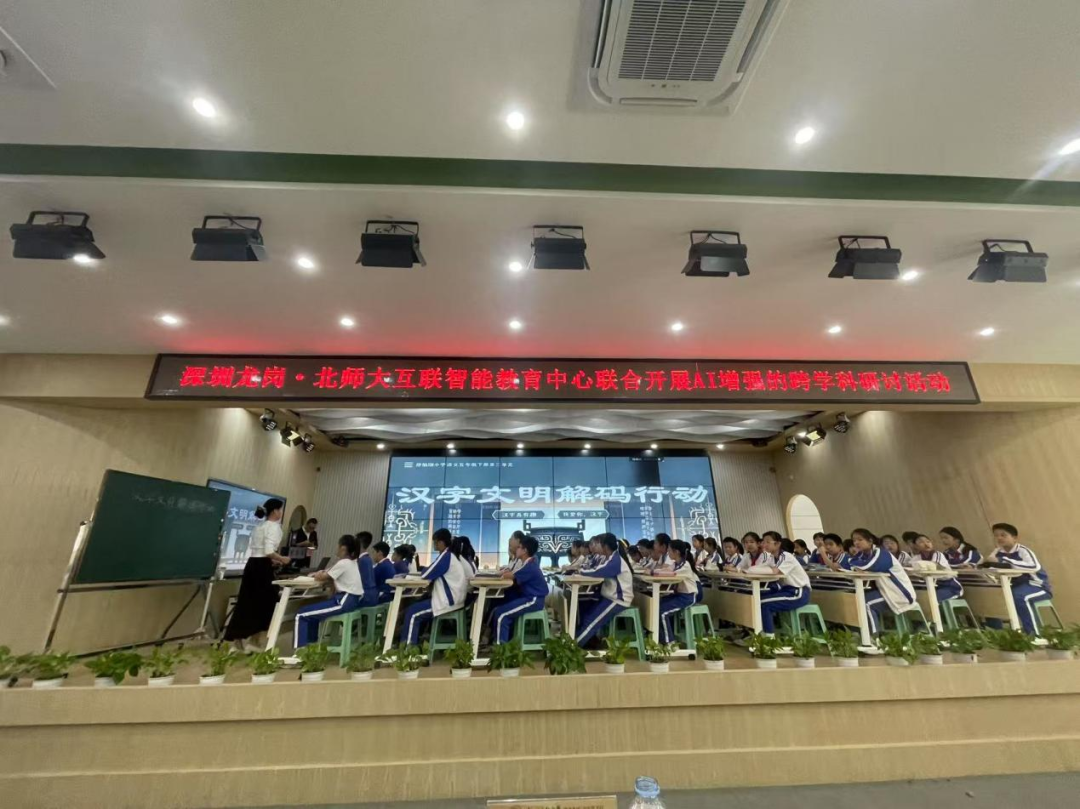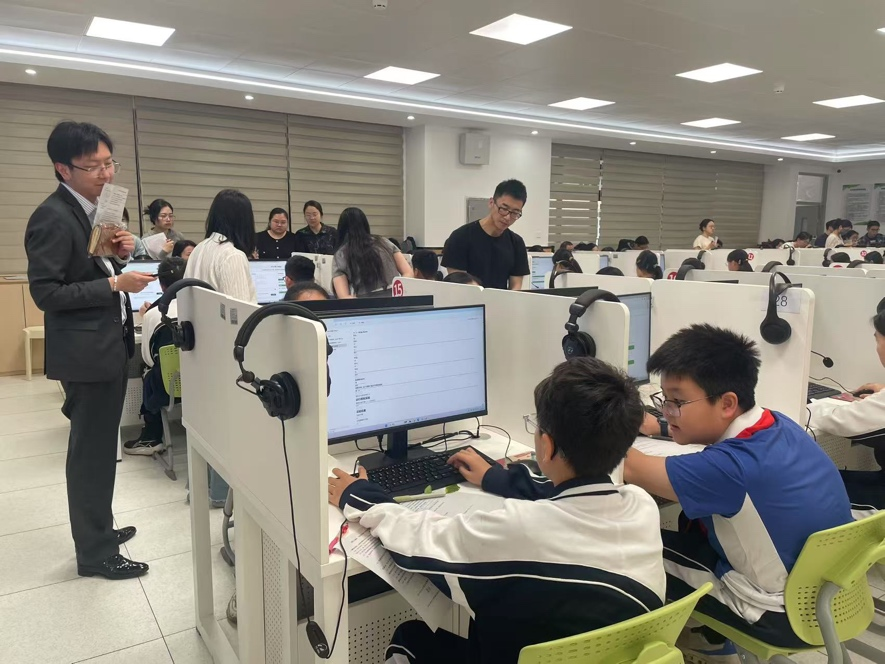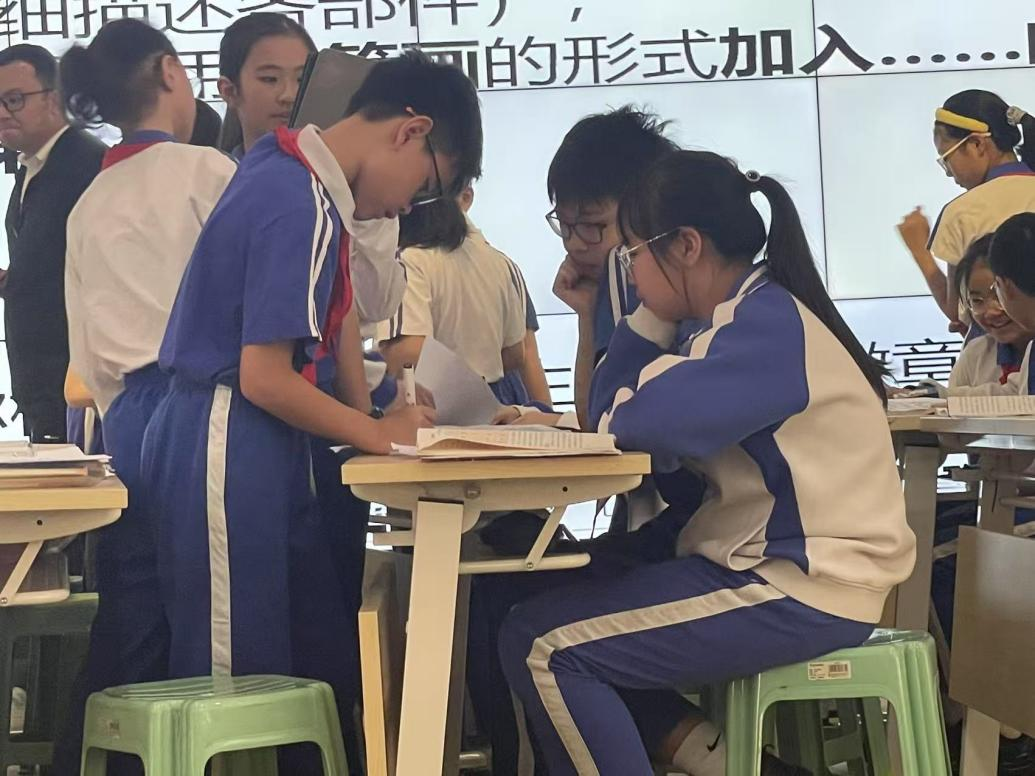Event Overview
In active response to China's national strategic deployment for educational digitization, and to promote the deep integration and collaborative development of artificial intelligence (AI) and education while empowering K-12 teachers to enhance their teaching innovation capabilities and practical skills in the AI era, the Interconnected Smart Education Center (CCIE) of the Future Education College at Beijing Normal University partnered with the Shenzhen Longgang District Educational Science Research Institute to jointly organize the thematic training event titled "AI-Empowered Interdisciplinary Teaching" on April 15 at Ping'anli School.
This initiative aimed to bridge cutting-edge AI technologies with pedagogical innovation, fostering cross-disciplinary teaching practices that synergize technological empowerment and educational advancement.

Event Review
I. AI-Empowered Interdisciplinary Classroom Teaching
Case 1: Mathematics Class Innovation
In an AI-empowered interdisciplinary teaching demonstration, mathematics teacher Chen Chen presented the lesson Statistics and Probability: Decoding Natural Laws through Mathematics, innovatively integrating biological knowledge with mathematical statistics. By guiding students to collect chamomile petal samples and leveraging AI agents to automatically generate large-scale simulated data, the class dynamically constructed real-time normal distribution curves. AI-powered data visualization agents vividly illustrated the quantitative relationship between sample size and statistical patterns, enabling students to master data modeling and scientific validation methods through human-AI collaboration.
Case 2: Chinese Language Class Innovation
In a groundbreaking Chinese language teaching practice, teacher Meng Chunyu designed the interdisciplinary lesson Ancient Scripts and Laser Engraving, structuring a three-phase pathway of "Chinese character decoding – artistic reconstruction – technological expression." The lesson guided students to analyze the structural principles of oracle bone scripts using AI generation technology and transformed creative designs into tangible cultural products via laser engraving. Through this innovative fusion of technological empowerment and cross-disciplinary integration, the lesson achieved a profound synthesis of traditional culture and modern technology. This approach not only ignited students' cultural innovation awareness and aesthetic perception but also infused classroom teaching with new momentum.

II. Systemic Classroom Teaching Reform: From "Knowledge Indoctrination" to "Human-AI Collaborative Education"
Following the observation activities, Professor Yuan Li, Dr. Zhang Yi, Dr. Yang Dong, and Dr. Shi Shengpeng from the Interconnected Smart Education Center engaged in in-depth discussions with participating teachers and student representatives, focusing on two core issues: instructional design and technological application. The experts unanimously agreed that interdisciplinary teaching should emphasize the inherent integration of knowledge systems rather than merely adding courses or establishing separate interdisciplinary subjects. The key lies in developing replicable disciplinary integration teaching models that provide practical implementation methods for routine classroom improvement. They emphasized that appropriate application of AI technology could effectively enhance classroom interaction and stimulate students' proactive inquiry. The discussion also highlighted that while AI-empowered teaching models expand teachers' professional development space, they simultaneously impose higher standards for teachers' instructional competence.
As AI generation technology gradually becomes normalized in teaching practices, establishing scientific "boundaries for tool usage" has emerged as a critical proposition. AI-empowered classroom teaching requires not merely technological superposition, but effective harnessing of technological potential to achieve coordinated development in three areas: innovation of teaching objectives, optimization of classroom design, and upgrading of evaluation systems. This approach positions AI as a "co-creation partner" in curriculum design and enables data-empowered "intelligent deduction" for instructional decision-making, thereby advancing the paradigm shift from "knowledge transmission" to "human-AI collaborative education" in classroom teaching.
Concluding the event, Professor Yuan Li delivered a keynote lecture titled "Generative Artificial Intelligence and the Reshaping of Education." Drawing parallels with Britain's historical "Red Flag Act," she cautioned educators to avoid both technological conservatism and uncontrolled expansion when confronting new technologies. She emphasized that AI technology should not be perceived as an educational endpoint, but rather as a starting point for reconstructing pedagogical paradigms. Professor Yuan proposed that as generative AI develops human-like cognitive simulation capabilities, educational focus should shift toward cultivating "irreplaceable, future-oriented core competencies." As demonstrated in the observed Chinese language class, students' creativity and imagination ignited through group discussions – these uniquely human advanced cognitive abilities – form the essential foundation for aesthetic judgment and critical thinking.
This observation and research activity provided a collaborative platform for the Interconnected Smart Education Center to work with Shenzhen's elite teacher studios, pedagogical research teams, and frontline educators in exploring "AI-empowered classroom teaching." Looking ahead, through multi-party collaboration and complementary advantages, this initiative is expected to further promote educational digital-intelligent transformation, laying both theoretical and practical foundations for constructing a new "AI+Education" ecosystem.




 Last Page
Last Page
 Phone:0756-3621121
Phone:0756-3621121
 Email:ccie@bnu.edu.cn
Email:ccie@bnu.edu.cn